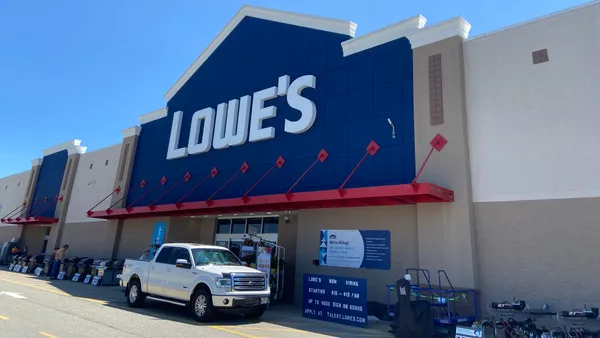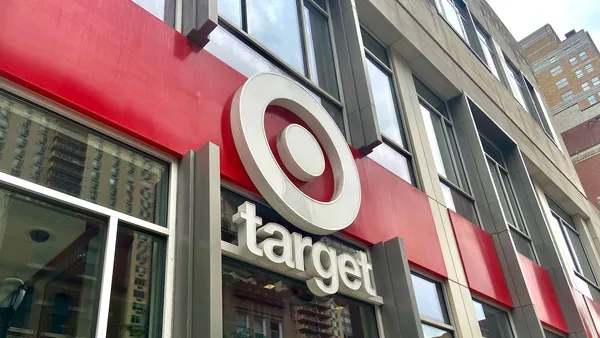Dive Brief:
-
November retail sales, adjusted for seasonal variation and holiday and trading-day differences (but not for price changes), were $465.5 billion in November, an increase of 0.1% from the previous month and a 3.8% increase from November 2015, the U.S. Commerce Department said Wednesday.
-
The minimal rise comes after two months of stronger increases, though October retail sales were revised downward from 0.8% to 0.6%.
-
Core retail sales — excluding auto and fuel sales and so a closer measure of retail store and restaurant spending — also rose 0.1%, according to the report. Economists’ estimates cited by Reuters called for increases of 0.3% for both overall retail sales and core sales for November.
Dive Insight:
The fairly muted November retail sales report — a disappointing surprise for the early days of the 2016 holiday shopping season — came as the Federal Reserve rose interest rates, a reflection that the U.S. has seen steady months of declining unemployment and rising wages. Despite the tepid sales growth, many economists do remain sanguine about the economy and many retail analysts similarly chalked up the November report to election distractions.
Some retail segments fared better than others last month: Sales rose 0.7% at furniture stores and 0.1% at electronics and appliance stores, health and personal care stores, and general merchandise stores. E-commerce also increased 0.1%. Apparel sales were flat, while sporting goods stores saw sales drop 1% and department stores sales fell 0.2%.
“Fortunately, once the election was over some of the latent demand produced a much better growth figure in week three,” Neil Saunders, CEO of retail research agency and consulting firm Conlumino, said in an email to Retail Dive. "During this week furniture retailers and home improvement retailers put in a particularly good performance, the latter being aided by the onset of colder weather. Early discounting in the period before Black Friday also helped to stimulate demand during this week.”
But Saunders called the Thanksgiving/Black Friday period “lackluster,” which retailers did to themselves, in part, by offering so many promotions much earlier.
In fact, promotions are shaping up to be the name of the game this year, and are set to hit margins, according to Jeff Edelman, Director of Retail and Consumer Products at middle market consultancy RSM US LLP.
“The November index suggests retail sales could be on track to record a roughly 3.5% increase for the holiday season,” Edelman said in an email to Retail Dive. “Promotional activity appears to be heating up, suggesting inventory will move at the expense of margins. On the plus side, Christmas falling on a Sunday could produce a big Saturday, with the day after Christmas becoming bigger every year.”
Moving past the holidays, general economic health doesn’t appear to be doing much for retailers overall, according to Ken Perkins, president of Retail Metrics, who predicted a lukewarm fourth quarter for many merchants.
“Retailers should be 'Decking the Halls' this holiday season with the both equity and housing markets as well as the U.S. economy all in their best shape since the financial crisis,” Perkins wrote in a note to Retail Dive. "But, they’re not. This begs the obvious question: With the economy in the best condition since the Great Recession, why aren’t retailers generating better sales and profit growth? If retailers cannot turn in solid earnings and revenue gains in this environment, how much stronger will the economy have to grow in order for the industry to break out of 1% to 2% same-store sales growth rut it has been in since the second quarter of 2012? Moreover, earnings growth has been low-single digit in each of the last 5 quarters and projected to decline in 4Q16.”
Perkins also noted that changing shopping habits are stymieing many traditional retailers, and the shift to e-commerce isn’t benefiting retailers across the board, despite so many of them boosting their operations in that channel.
“Non-store retailers (e-commerce) sales increased four times as much as total retail sales; 11.9% vs 3.8% year-over-year for total retail,” he said. “This structural shift in spending channels is disproportionately accruing to one retailer and not necessarily being spread across the entire industry, even though numerous retailers have invested heavily in building out their omnichannel capabilities.”
Millennials, that huge generation that continues to hold hope for many retailers, continue to prioritize experiences over things, Perkins added. “Traditional retailers don’t sell experiences and find themselves increasingly competing for limited wallet share with massages, ziplining, sporting events, spas, concerts, shows, destination experiences, etc.,” he said. “Moreover, the November Retail Sales report highlighted food services & drinking places (restaurants) as generating the strongest month-to-month sales increase of any segment.”












